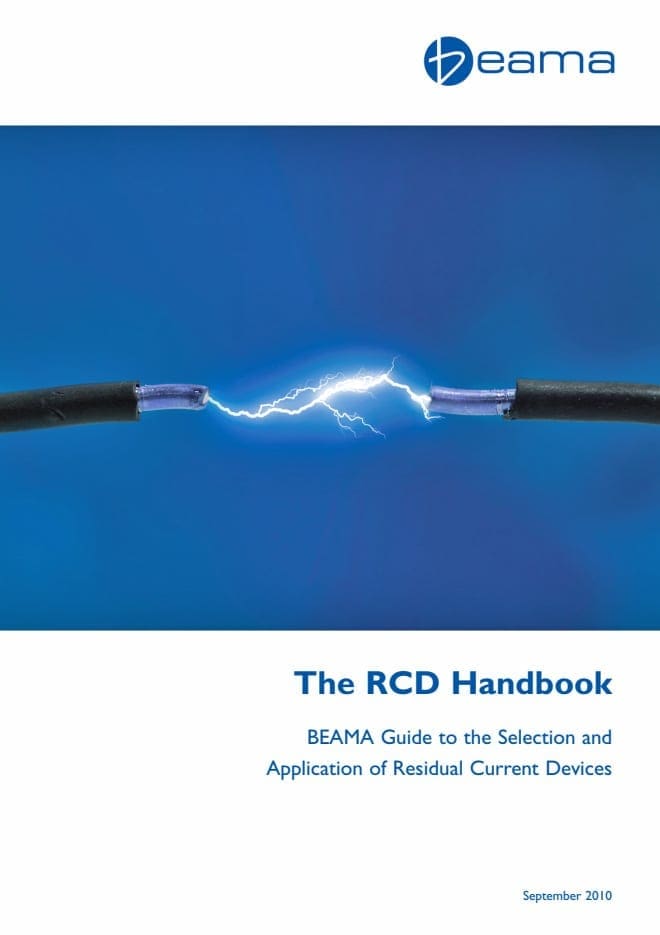Neutral to Earth Faults
Although neutral to earth faults do not normally fall under the heading of ‘unwanted’ tripping, they can result in intermittent effects within an installation that appear illogical and very similar to unwanted tripping. This is particularly true where the neutral to earth fault impedance is significant or where the installation is part of a PME (Protective Multiple Earthing) TN-C-S system.

This is aggravated by the fact that it is difficult to electrically isolate parts of the neutral wiring of an installation.
The detection of a neutral to earth fault by an RCD depends on either:
- The existence of a neutral potential above earth caused by the voltage drop along the neutral or
- The existence of a load connected into the protected circuit. Part of the load current then flows back via the earth return thus tripping the RCD.This load current will also cause a voltage drop along the neutral
In a non TN-C-S system, the existence of such a neutral potential above earth is almost inevitable due to all the consumer loads connected to that neutral. In a TN-C-S installation the neutral potential above earth can depend on that one consumer load, due to the TN-C-S link.
Therefore, in a TN-C-S installation with no load, or a very light connected load, RCD cannot detect a neutral to earth fault. This can also happen in a non TN-C-S system where all consumers on the same neutral are taking virtually no load or in an installation that happens to be close to the substation.
In practice these last effects are rare.
By itself this condition is not serious since, if no current is flowing, the neutral to earth fault is not a danger but as soon as a load is connected, and the earth leakage current reaches a dangerous level, the RCD will trip.
The user or installer may be baffled by all these effects and will often describe the fault as spurious or nuisance tripping.

Double Grounding
‘Double grounding’ is a phenomenon highlighted by the Americans – hence its name. It is frequently discussed in IEC committees. It occurs when two earth faults – a phase to earth fault and a neutral to earth fault – occur simultaneously in a circuit protected by an RCD.
Where these earth faults do not present large impedances, and therefore the earth fault current is limited, nothing out of the ordinary is likely to happen.
However, when the earth fault impedance of both faults is significant, then a situation can occur where the phase to earth fault current can cancel the effect of the neutral to earth fault current since the two currents flow in opposite directions through the RCD.
| Title: | Selection and Application of Residual Current Devices – BEAMA |
| Format: | |
| Size: | 4.7 MB |
| Pages: | 59 |
| Download: | Here 🔗 (Get Premium Membership) | Video Courses | Download Updates |



What causes nuisance trips on residential properties which have utility power and generator power connected through a 4 pole transfer switch. The trips happens during switchover especially from utility to generator power. This is a common problem as we are experiencing severe power cuts in South Africa.